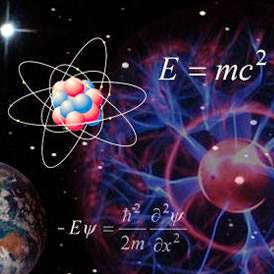 |
Schematic of the experimental setup. (A) Heat flows from the hot to the cold spin (at thermal contact) when both are initially uncorrelated. This corresponds to the standard thermodynamic arrow of time. For initially quantum correlated spins, heat is spontaneously transferred from the cold to the hot spin. The arrow of time is here reversed. (B) View of the magnetometer used in our NMR experiment. A superconducting magnet, producing a high intensity magnetic field (B0) in the longitudinal direction, is immersed in a thermally shielded vessel in liquid He, surrounded by liquid N in another vacuum separated chamber. The sample is placed at the center of the magnet within the radio frequency coil of the probe head inside a 5mm glass tube. (C) Experimental pulse sequence for the partial thermalization process. The blue (red) circle represents x (y) rotations by the indicated angle. The orange connections represents a free evolution under the scalar coupling, HJHC = (πh/2)JσzHσzC , between the 1H and 13C nuclear spins during the time indicated above the symbol. We have performed 22 samplings of the interaction time τ in the interval 0 to 2.32 ms. Credit: arXiv:1711.03323 [quant-ph]
Topics: Entropy, Spacetime, Thermodynamics
Abstract
The second law permits the prediction of the direction of natural processes, thus defining a thermodynamic arrow of time. However, standard thermodynamics presupposes the absence of initial correlations between interacting systems. We here experimentally demonstrate the reversal of the arrow of time for two initially quantum correlated spins-1/2, prepared in local thermal states at different temperatures, employing a Nuclear Magnetic Resonance setup. We observe a spontaneous heat flow from the cold to the hot system. This process is enabled by a trade off between correlations and entropy that we quantify with information-theoretical quantities.
The second law of thermodynamics says that entropy, or disorder, tends to increase over time, which is why everything in the world around us appears to unfold forward in time. But it also explains why hot tea grows cold rather than hot. In this new effort, the researchers found an exception to this rule that works in a way that doesn't violate the rules of physics as they have been defined.
The idea of entangled particles has been in the news a lot lately as researchers around the world attempt to use it for various purposes—but there is another lesser-known property of particles that is similar in nature, but slightly different. It is when particles become correlated, which means they become linked in ways that do not happen in the larger world. Like entanglement, correlated particles share information, though it is not as strong of a bond. In this new experiment, the researchers used this property to change the direction of the arrow of time.
Experiment shows that arrow of time is a relative concept, not an absolute one
Bob Yirka, Phys.org
Reversing the thermodynamic arrow of time using quantum correlations
Kaonan Micadei,1, ∗ John P. S. Peterson,2, ∗ Alexandre M. Souza,2 Roberto S. Sarthour,2 Ivan S. Oliveira,2 Gabriel T. Landi,3 Tiago B. Batalhão,4, 5 Roberto M. Serra,1, 6, † and Eric Lutz7, ‡
Physics arXiv

No comments:
Post a Comment